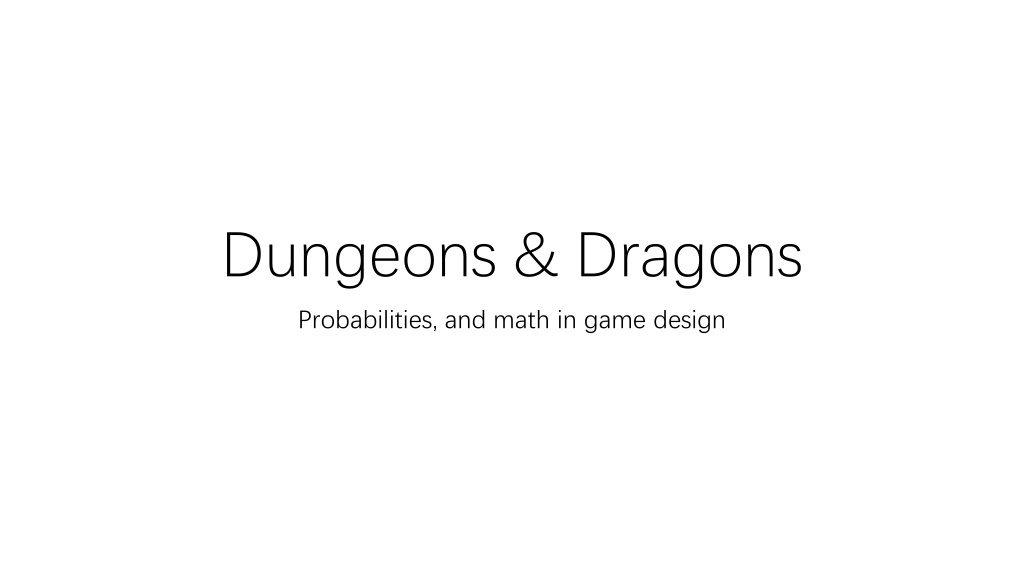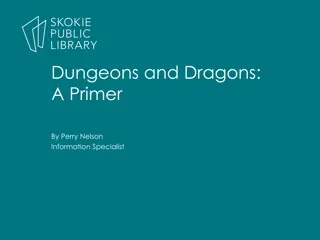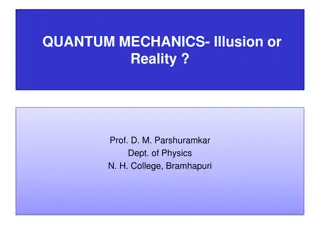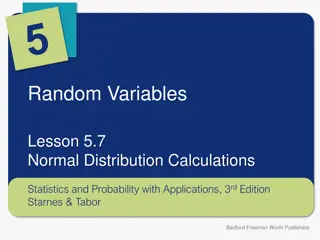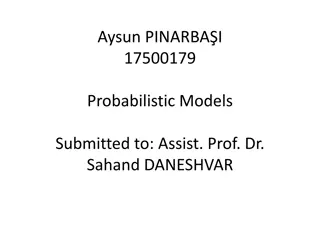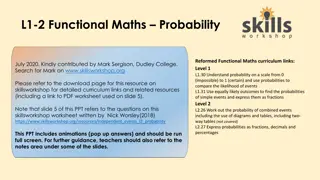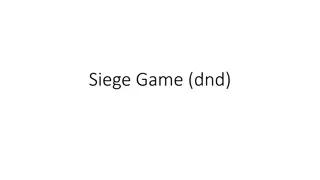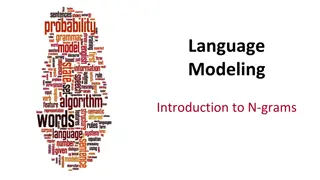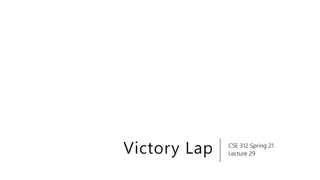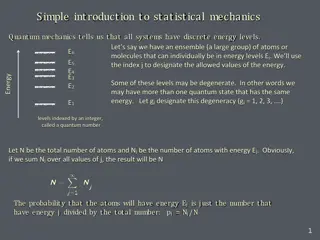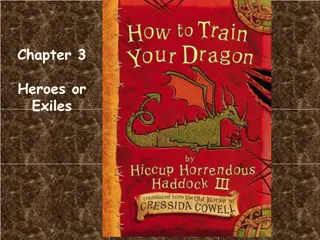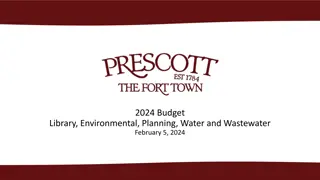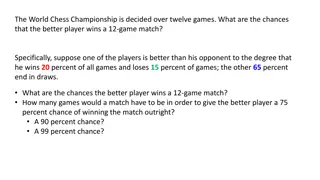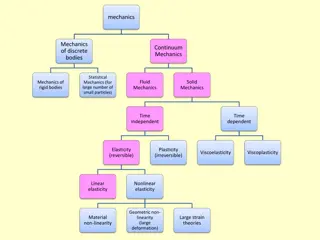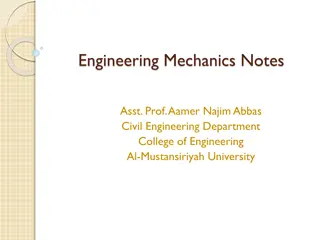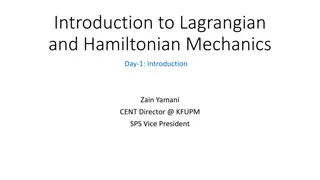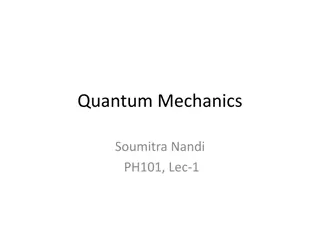Dungeons & Dragons Probabilities and Combat Mechanics
Dungeons & Dragons (D&D) is a fantasy tabletop RPG that involves rolling a 20-sided die (d20) to determine outcomes like attack hits, critical hits, and damage. Combat mechanics rely on modifiers, proficiency bonuses, and armor class to calculate the probability of winning battles against foes like goblins. Learn how to strategize with different fighting styles in this immersive game experience.
Download Presentation

Please find below an Image/Link to download the presentation.
The content on the website is provided AS IS for your information and personal use only. It may not be sold, licensed, or shared on other websites without obtaining consent from the author. Download presentation by click this link. If you encounter any issues during the download, it is possible that the publisher has removed the file from their server.
E N D
Presentation Transcript
Dungeons & Dragons Probabilities, and math in game design
Dungeons and Dragons Dungeons & Dragons (commonly abbreviated as D&D or DnD) is a fantasy tabletop role-playing game (RPG) originally designed by Gary Gygax and Dave Arneson. You would be able to create your own character and adventure in the world that Dungeon Master(DM) creates A complete rule, defining how we should decide the whether you succeeded in a certain action Especially in combat
D20 Dungeons & Dragons game relies on rolls of a 20-sided die, a d20, to determine success or failure. E(1D20) = 10.5 P(Getting any number) = 1/20 = 0.05
Attack Rolls When you make an attack, your attack roll determines whether the attack hits or misses. To make an attack roll, roll a d20 and add the appropriate modifiers. If the total of the roll plus modifiers equals or exceeds the target s Armor Class (AC), the attack hits. D20 + Modifiers VS Enemy s Armor Class(AC)
Modifiers Ability Modifier. For a new character it is typical to have the highest ability score at 16. So modifier would be +3. Proficiency Bonus +2 for level 1 fighter.
2 special cases D20 = 1 It fails D20 = 20, it succeeds, with a critical hit.
Damage Weapon damage + Ability modifier Shortsword: 1D6 Damage: 1D6 + modifier(+3) For a critical hit, damage = weapon damage*2 + modifier
What is the probability that our warriar can win this fight?
Fighting style Two single-handed weapons One weapon, one shield ( AC+2 One two-handed weapon
Let m be modifier, and p be proficiency When AC < = M+P: P(Hitrate) = 0.95 When AC > 20 + M +P: P(Hitrate) = 0.05 AC = 15 M+P = 5 P roll > =10 = 11/20 When AC is in the middle:
Damage Expectation Assuming the weapon damage is 1DX E(one single hit) = (x +1)/2+m
Damage for Weapons 8 7 Damage Chart for single-hand weapons 6 5 Damage 4 Longsword Shortsword Dagger 3 2 1 0 0 5 10 15 20 25 30 Enemy AC
Damage for Weapons 12 10 8 Damage Chart for Double- Hand Weapons Damage 6 Longsword Greataxe Greatsword 4 2 0 0 5 10 15 20 25 30 Enemy AC
Sword+Shield P(Hit Rate) = 0.55 E(Damage Expectation) = 4.35 - 4.35 P(Getting Hit) = 0.4 - 2.5 E(Hurt Expectation) = 2.5 -4.35 = dead Killed the goblin losing 2.5
A greatsword P(Hit Rate) = 0.55 E(Damage Expectation) = 5.85 - 5.85 if the goblin <=5 P(Getting Hit) = 0.5 -2.925 E(Hurt Expectation) = 2.925 dead
Rule for holding 2 weapons It must be 2 light weapons( 1d6 at most) You get to attack once more, however, your damage of the second attack would not include the modifier.
Two shortswords P(Hit Rate) = E(Damage Expectation) =4.95 P(Getting Hit) = 0.5 E(Hurt Expectation) = 2.925
Assume I won the initiative Fighter goblin- fighter 1d10 + dexterity modifier 14 = 14 50%
Calculate the possibility that one would lose P = 50% ( didn t kill the goblin in the first turn * goblin killed you in 1 turn + didn t kill him in two turns*killed you in 2 turns + 3 hits didn t kill * killed in 3 turns + )+ 50%( ) Not really sure how to calculate this V() = E(x^2) E(x)^2
Goblin hp: 7 10+5 >= 15: That hits 1d8 +3 = 4+3 = 7 7 = 0 goblin dead 7+5<15: That didn t hit Nothing happens 20+5 critical hit 2d8+3 = 14 goblin dead
References DnD, 5thedition, player s handbook
